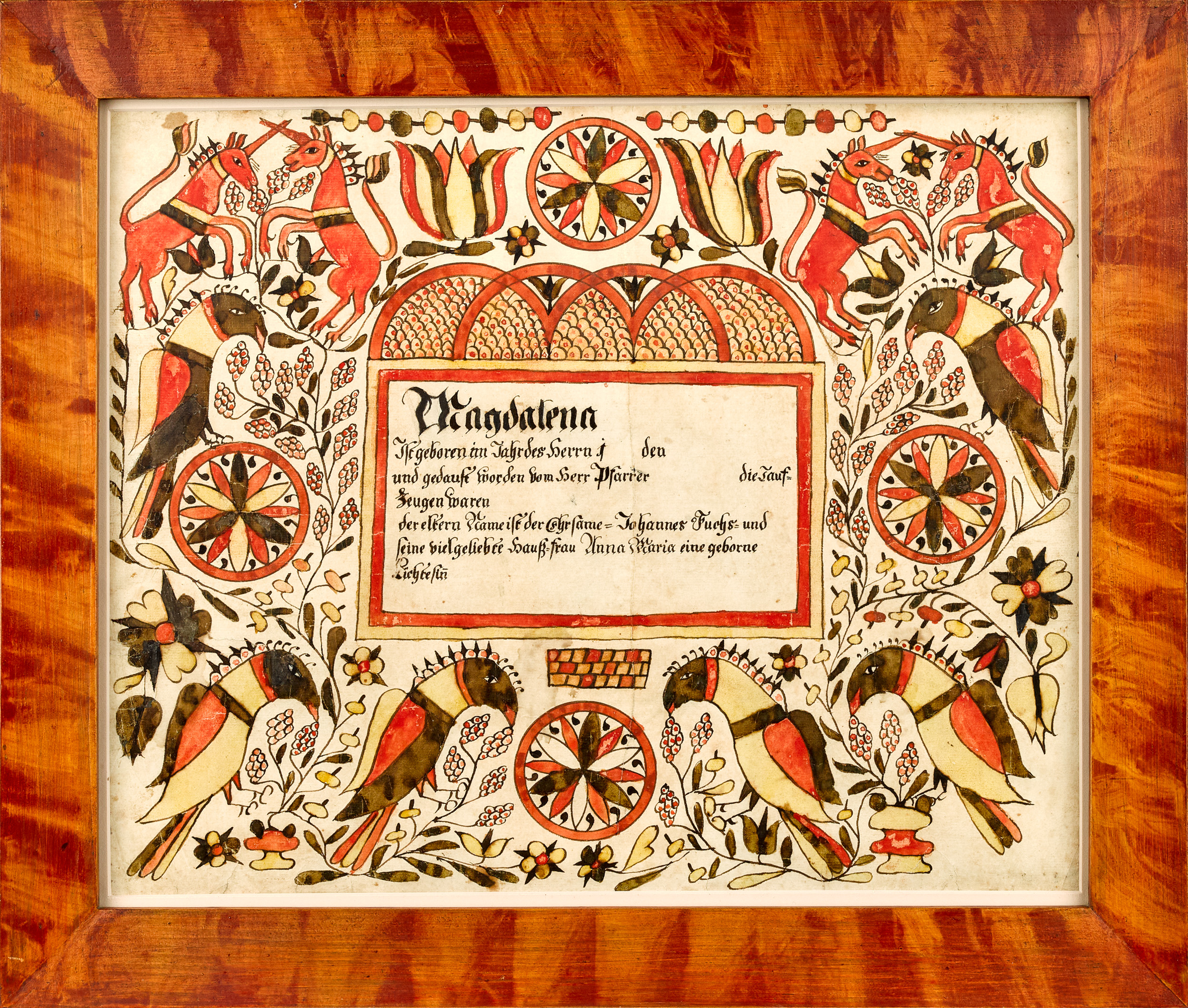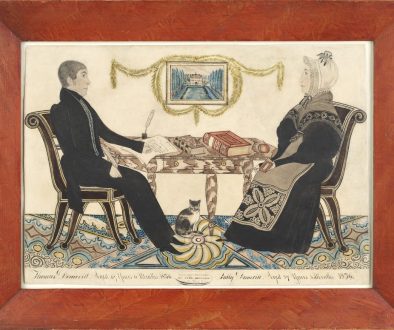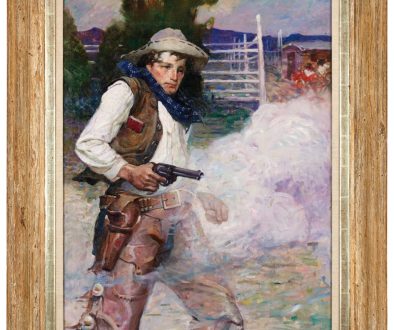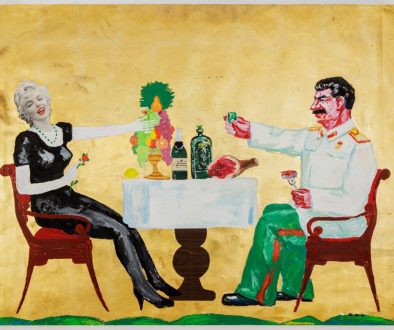In a field of horses, be a unicorn!
Pook & Pook is honored to present the Pennsylvania German Folk Art Collection of Drs. Donald and Patricia Herr on Thursday and Friday, June 9th & 10th. Descended from Hans Herr (1639-1725), the first Mennonite bishop to immigrate to America, The Herr family has deep roots in Lancaster County, Pennsylvania. In 1710 Bishop Herr’s congregation purchased 10,000 acres of land from William Penn. The group was part of a large wave of German immigration to Pennsylvania, begun in 1683 with the settlement of Germantown. By the Revolution, Benjamin Franklin estimated that about one-third of the population of Pennsylvania was German. Leaving the war-torn lands of the Palatinate, families were attracted by Penn’s promise of religious tolerance, abundant farmland, and a peaceful existence. Skilled farmers and artisans, the Herr family, like most, prospered.
Collectors of Pennsylvania German folk art for six decades, Donald and Patricia Herr became true connoisseurs, retaining only the best examples of an artist’s work, the best of a form, and the rarest and most highly sought after examples. Researching and documenting their collection, Drs. Donald and Patricia Herr may have applied the scientific method to antiques. They published studies and research papers on a wide range of Pennsylvania German subjects. They recorded their observations, made comparative studies, and researched provenance and the progress of objects, artisans, and families through time. The Herrs uncovered relationships and made connections, adding greatly to the study of Pennsylvania German artists and craftspeople. Throughout the collection, common family names crop up on diverse items. Alongside the colorful painted wooden creations of Joseph Lehn, one finds his copybook, dated 1843, and a fraktur by his son Henrich Lehn for his grandson, Joseph, born 1829. The Herr name is found on diverse objects, with a Herr family coverlet, a Grandmother Herr quilt, an 1828 David Herr watercolor fraktur of birds, and Herr family birth and baptismal frakturs. The Herr’s research led to new discoveries, such as when Drs. Don Herr and Don Yoder collaborated to uncover the identity of the “Sussel Unicorn Artist.” Schoolmaster Christian Beschler (Germany, Northumberland County, ca. 1800) created only ten known works, eight of which are taufscheine. Two of these rarities were collected by the Herrs; a birth and baptismal certificate for Jacob Jaekle, dated 1796; and for Magdalena Fuchs b. 1801. Both are profusely decorated with compass stars, hearts, unicorns, and parrots amid tulips, flowers, and vines. They might be 20% of Beschler’s known output, but these frakturs are only a small proportion of this stellar assortment. Other works include a Johann Heinrich Otto (Southeastern Pennsylvania active 1762-1797) watercolor fraktur of a parrot and bird perched on stylized flowers, and works by Georg Frederich Speyer, Henrich Dulheuer, Samuel Bentz, John Zinck, Jacob Andreas, and Christian Strenge.




